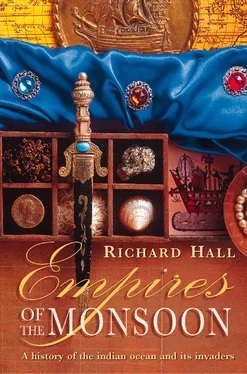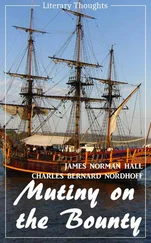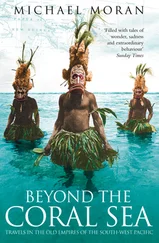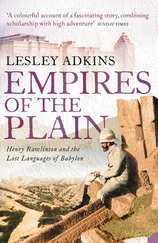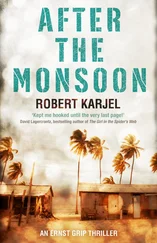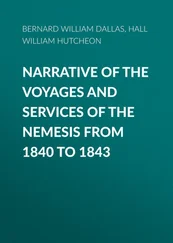After this, the defeated Arabs decided that for the time being they had had enough. They withdrew northwards, making it their aim to contain the rebels within the two provinces encompassing the marshes and canals. It was the signal for Ali to create his own administration, to build himself a capital and – the ultimate show of treason in Islam – to mint his own coinage. Already famous as the ‘Lord of the Zanj’ or ‘Prince of the Negroes’, he now went on to declare himself to be the Mahdi, the new leader sent by Allah. He became known as al-Burku, the ‘Veiled One’. For ten years he ran his kingdom unchecked, even spreading his revolutionary message right across Arabia to Mecca. In 880 a detachment of Zanj briefly seized control of the holy city. A year earlier they had been within seventy miles of Baghdad.
Then the title of the revolution began to ebb. After three years of preparation an army of overwhelming strength was despatched from Baghdad under the leadership of the regent al-Muwaffaq. The Zanj were smashed in battle after battle, until at last they retreated into Ali’s capital of al-Mukhtara, ‘city of the elect’, north of Basra. From one town abandoned by the rebels 5,000 women were freed and sent home to their families.
All prisoners taken by the government army were decapitated, just as the rebels’ captives had been. One day, the heads of Zanj captives were paraded in boats in front of the besieged citadel. When Ali insisted that the heads were not real, but only the product of witchcraft, the general commanding the army ordered that the heads should be catapulted into the citadel by night. One black leader, cryptically described in contemporary accounts as ‘the son of the king of the Zanj’, was put to death by Ali after rumours that he planned to defect to the enemy.
In the end, in 883, the great slave uprising was finally crushed, although the most resolute of the Zanj fought to the last. Ali had refused an absolute pardon, probably doubting that the promises made to him would be honoured. His head was borne on a flagstaff back to Baghdad by the son of al-Muwaffaq, who had vanquished the Zanj. It became the centrepiece of celebrations. Two years later, when the slaves tried to rise again, five of their leaders held in prison were instantly beheaded.
One consequence of the revolt was an upsurge of fear and anger against the Zanj among the people of Baghdad. During a time of tumult the Arab cavalry in the army took the opportunity to massacre the caliph’s black spear-carriers and bowmen, with the help of the citizens. However, it was not merely hatred of Africans which led to a fall in the numbers of black slaves being transported across the Indian Ocean; the decline of Baghdad and other Iraqi cities meant there was less need for labour to work on grandiose building projects.
After about A.D. 1000, Africa’s ivory and gold became more sought-after than its people. Prisoners taken in wars with the Christians of Abyssinia met most of the needs of the slave trade. Nevertheless, the continent was still cast in a subservient role. The interior remained sealed off, dealing with the outside world through the Muslim intermediaries. Africans came to the coast, to live in the towns or to cross the ocean, usually against their will. They did not go back, to take inland the ideas which could have stimulated change.
The clearest contrast was with India, where coastal cities gave allegiance to powerful inland states whose culture and religion they shared. Watered by the monsoon rains, India grew enough crops on its fertile lands to feed a vast population as well as spices for export and cotton to be made into cloth. Its manufactures were sold throughout the Indian Ocean and beyond, just as the tales from its literature were translated and adapted all across the known world.
THREE
The Mystery of the Waqwaqs
In the same way that the Sea of China ends with the land of Japan, the Sea of Zanj ends with the land of Sofala and the Waqwaq, which produces gold and many other wonderful things. It has a warm climate and is fertile.
—Al-Mas’udi (893–957), The Meadows of Gold
AS OLD AS the monsoon trade between Arabia and East Africa, the contacts across the eastern expanse of the Indian Ocean date back to the time when Buddhism held sway over much of Asia. Two thousand years ago ships were taking merchandise from the powerful Satavahana kingdom of southern India to Sumatra, Java and Bali. It was a two-way trade, with bronze ware from Indonesia being exported to India. These contacts had been known to the Romans on one side of the world and to the Chinese on the other. A much-travelled historian and diplomat, Kang Tai, writing 1,700 years ago, told of ships from a Sumatran kingdom he called Geying sailing 8,000 li (about 2,500 miles) to a busy Indian port where ‘people came from all quarters’.
Indian monks spread Buddhism to the Indonesian islands; it was traders who brought Hinduism. In later centuries, Hinduism was to advance well beyond the Indian Ocean, extending northwards through the China Sea to what is now Kampuchea. The surviving monuments to this expansion are great temples and palaces overgrown by jungle, the best-known being Angkor Wat.
Relations between India and its trading settlements across the ocean to the south-east were not always friendly. Hindu armies were active in Indonesia during the tenth century, and later a warlike Sumatran state, Sri Vijaya, sent its fleets northwards to attack Ceylon. Such events belong to the complex, interwoven history of the Indian Ocean spreading over several thousand years, and it is only in this context, of the sea as a cultural and geographic entity, that the Waqwaq migrations westwards from Indonesia become credible. Even so, the French historian Hubert Deschamps has called them ‘one of the greatest mysteries of mankind’, and only fragments of the story have so far been assembled from archaeology, linguistics and anthropology.
Why the Indonesian seafarers known as Waqwaqs acquired such a curious name is, like much else about them, obscure; it may simply have been a mocking imitation by their enemies of the sound of their speech. More probably the source is waka , the name given in parts of Indonesia to the type of outrigger canoe the Waqwaqs used. The one indisputable fact is that they voyaged 3,500 miles from their homeland to discover and settle in Madagascar, off the coast of Africa.
Their migration to what would prove to be one of the world’s biggest islands, a semi-continent, never until then inhabited by humans, is an astonishing chapter in the annals of ocean travel. The date when the first wave of Waqwaq migrants reached Madagascar is a matter of controversy; one clue is in the language they brought with them (and which still makes up more than nine-tenths of the Malagasy vocabulary, a bond across the ocean). It includes many Sanskrit loan words, and Sanskrit influence was at its strongest in Indonesia in about A.D. 400. 1
The Waqwaqs were setting foot in a land where the animal life had developed in almost total isolation for 150 million years. There were no elephants, giraffes or lions, as on the African mainland 300 miles further west; but species which existed in Africa before Madagascar ‘broke away’ had lived on undisturbed, including the agile, wide-eyed lemurs, from the same stock as apes and humans. There are hundreds of varieties of insects found nowhere else in the world. In the deep seas near Madagascar lives the coelacanth, another survivor from the remote evolutionary past, a clumsy fish with huge scales and fins resembling legs.
Perhaps most remarkable of all the animals there when the Waqwaqs arrived was the Aepyornis maximus , a flightless bird which stood ten feet high and laid eggs more than a foot long. It probably gave rise to the persistent myth of a monstrous eagle, variously called a rukh, peng or gryphon, living in the Indian Ocean and believed capable of picking up an elephant, bearing it to the heavens, dropping it to earth, then devouring it. The Chinese were especially devoted to this fantasy, and described the bird as being able to fly 19,000 li before needing a meal. It must surely be more than a coincidence that the Aepyornis maximus became extinct around the time that the first Waqwaqs reached Madagascar. These awkward, inoffensive creatures would have been easy prey for humans equipped with bows and arrows; tales spread by the Waqwaqs of a bird which laid a huge egg may well have grown into something far more extravagant in the course of a few retellings.
Читать дальше
